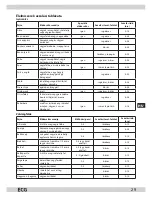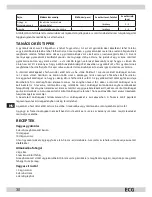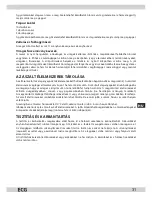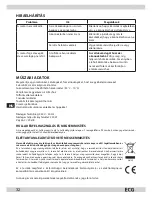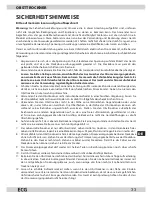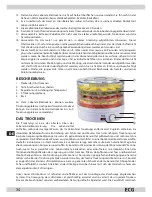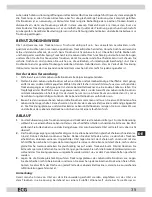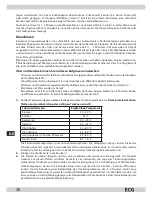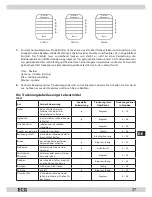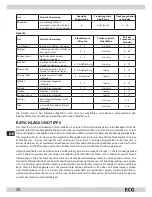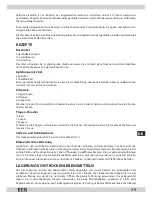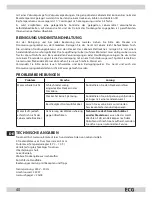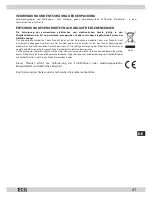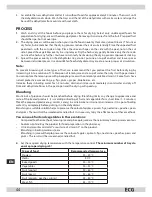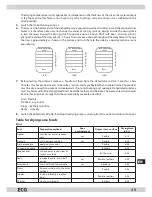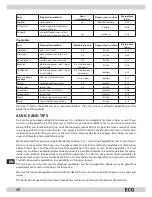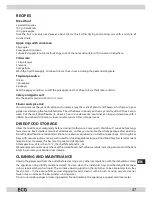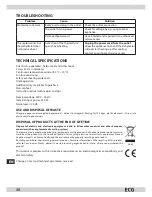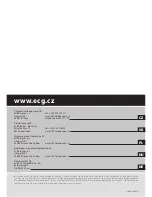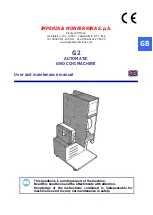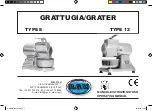
43
EN
must not carry our cleaning and maintenance of the appliance, unless they are 8 years or older and
under supervision. Children younger than 8 years have to be kept away from the appliance and its power
supply.
DESCRIPTION
1. The dehydrator cover
2. ON/OFF
button
3. Temperature
control
4. 5 drying trays
5. Base
It is possible to purchase additional drying trays
(up to maximum 9 trays may be added to the
dehydrator).
DEHYDRATION
Dehydration is one of the oldest methods of food
preservation. Food contains more or less water,
which we remove in the process of dehydration. In
the same time, you remove the breeding ground for mold and decay. It is possible to keep the dehydrated
foods for several years after proper drying and under good storage conditions. Removal of moisture from
the foods concentrates the aromatic compounds, which makes the foods tastier. The preservation is done in
a natural way without using preservatives. No vitamins and minerals are destroyed. Even if you use to can or
freeze food, drying will expand your options of storing fruit, vegetables, mushrooms, herbs and teas and it
will enrich your culinary knowledge. In our geographical conditions, drying of food on the sun can happen
more by chance. When drying food in an electric or a gas oven, which is not designed for it, the food “sweats”,
because of reduced air circulation, juice drips and the food sticks to the tray. Moreover, it is very diffi
cult to
clean the oven off the burned juice.
Your new food dehydrator is faster and more eff ective thanks to the system based on physics. The airfl ow
after intake is evenly heated and distributed in order to remove moisture content from food prepared on
each tray. The moist air is drained through the openings in the lid of the dehydrator. This system allows
drying at all levels, however for the uniform drying of the contents in the entire dehydrator, it is necessary to
alternate the order of the trays, because the most intense drying occurs at the bottom level. Just before the
dehydration process is fi nished, it is advisable to check the quality of the dehydration visually and by touch.
According to your consideration, it is possible to sort out the food and increase the drying time.
OPERATING INSTRUCTIONS
Fruit and vegetables for dehydration should be fresh and fully ripe. It is not possible to obtain good quality
dried food from old, bruised, poor quality fruit. Unripe fruit lacks colour and fl avour which cannot be improved
by drying. Overripe fruit is hard and woody or soft and mushy. Dehydrate foods fresh, in time and in the same
time. Clean and wash fruit before dehydration, so that it is clean and free of chemicals. Look the fruit over and
discard any which are spoiled, mouldy or damaged, otherwise they might spoil the whole batch. Remember,
that during drying you will smell the aroma of drying foods, which is not pleasant for everybody.
Before fi rst use:
1. Remove all packaging material from the dehydrator.
2. Place the dehydrator on a stable and heat resistant surface, away from other heat sources. Choose
a surface considering the fact that it is not suitable to move the dehydrator to another place during
drying. The load capacity of the surface has to bear the weight of the dehydrator including the prepared
contents. There has to be at least 15 cm of free space around the appliance to ensure proper operation
of the dehydrator.
1
4
5
3
2

